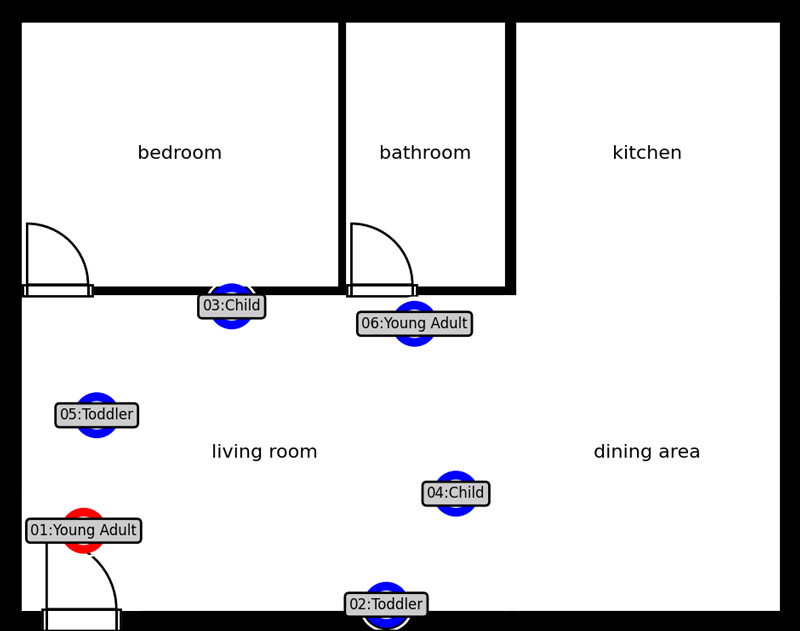How predictive modeling could help us reopen more safely
Graphical online simulation could spur more targeted COVID-19 protection measures.
Our campus, like the global community, is contending with COVID-19 and working to adapt to a new normal. Many are rapidly working on solutions. See all COVID-19 developments from Michigan Engineering.
How many people can safely shop in the same grocery store? Are masks really important? Is six feet far enough? Increasingly specific social distancing questions are weighing on states and municipalities as they inch toward relaxing COVID-19 restrictions. Now, a team of computer science and medical researchers is working on a tool that could provide more precise answers.
Based at the University of Michigan, the team is mashing up census data, virus transmission rates and decades of social science research. They’ve created a prototype that can visually model an individual household, enabling users to customize it with the size and type of dwelling, the number of occupants and whether any of those occupants are infected with the virus. They hope to make an open-source version available within the next few months, enabling municipalities and other decision makers to evaluate how proposed policies would affect virus transmission rates in different types of households.
“We want to give policymakers the power to ask ‘what-if’ questions about the effects of specific policies and actions, before they’re implemented,” said Nikola Banovic, an assistant professor of electrical engineering and computer science at U-M. “By trying out dozens or hundreds of possible interventions in a simulation, we could much more quickly find policies that would keep people safe while minimizing disruption to daily life.”

 Enlarge
Enlarge
Such a tool could inform more targeted guidelines or help governments target assistance to the types of households that are likely to need it most.
“A lot of guidelines that have been put in place tend to treat all households the same, but in reality, they’re not the same,” said Banovic. “A family of four that’s living in a studio apartment, for example, can’t social distance in the same way as a family that lives in a three-bedroom house.”
Perhaps just as importantly, Banovic says that giving policymakers the tools to make better decisions faster could help nurture trust by reducing the need to implement sweeping measures that are sometimes seen as too broadly restrictive.
Ultimately, they hope to broaden the tool’s scope beyond individual households to model entire neighborhoods, cities or perhaps even larger areas. They’re looking into the feasibility of conducting a national survey to capture more detailed data that would inform ever-more precise models.
“One thing that we’re very interested in is modeling shopping behaviors, particularly among vulnerable populations” he said. “Some of us can afford to buy weeks worth of food at a time, but others have to go out again and again to buy food as they can afford it. How does that affect transmission risk and what can be done about it? Better answers to questions like these could help us do more to keep people safe.”
 MENU
MENU 
